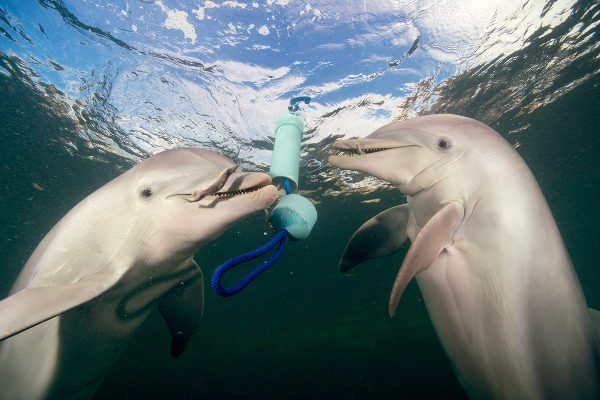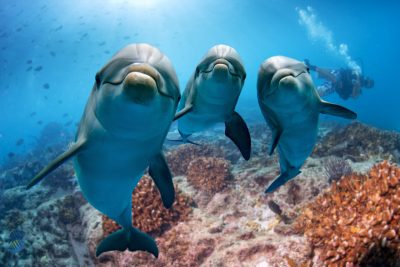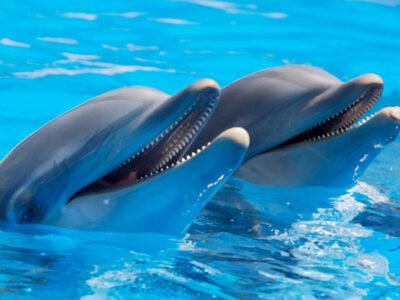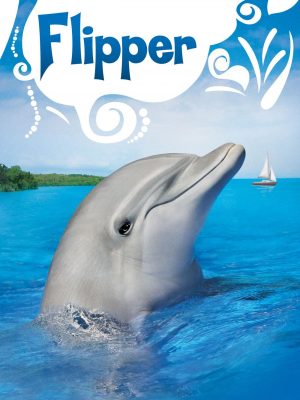
My website just got a refresh and a dolphin swam into the header. Did I convert my law practice to an aquarium? Did I move to Miami? I did not.
Do I long for a beach vacation in the midst of the coronavirus stay-at-home? I do, but that’s not why the dolphins are here.
A few years ago I read about a book titled “Swimming Lessons for Baby Sharks: The Essential Guide to Thriving as a New Lawyer.” Its cover image was the ominous shark fin rising from calm ocean water. The story of my website dolphin began when I learned about this book.
I knew I wasn’t a shark. My clients and partners in Structured Negotiation weren’t either. Could we be another sea creature?
Why are Lawyers Called Sharks?
A quick Google Search turns up hundreds of lawyer-as-shark jokes. It’s a metaphor with deep roots. Moby Dick includes a description of the
Brown Shark, or sea attorney, so called by sailors; a grasping, rapacious varlet…vultures of the deep.” Herman Melville in Moby Dick
I was not surprised when I looked up the word “varlet” to discover it means a “dishonest or unprincipled man.”
[I learned about Melville’s lawyer-as-shark reference in a great article titled Shark Week: A Brief History of the Lawyer as Shark.]
The association of lawyer with shark is troubling to me. During a workshop that Shawn Henry and I led for digital designers at the University of Wisconsin Madison, we asked participants to write down the first words that came to mind when hearing the word “shark.” Among the associations?
This is not the kind of lawyer I want to be. This is not the lawyer I have been while practicing the collaborative dispute resolution process known as Structured Negotiation for the past two plus decades. These are not adjectives that describe the clients I represent or the organizations I work with.
Most importantly, in my view, this is not the kind of lawyer that can most effectively advance digital accessibility, which has long been the focus of my work. And these are not words that describe the accessibility champions working tirelessly to make the digital world inclusive for everyone.
For twenty five years, I have rejected the sharkiness of my profession. I’ve chosen the dolphin instead.
Dolphins are Better
 When I decided several years ago to reject the shark, I contacted two friends who are marine biologists and asked them for a substitute sea creature. One that was collaborative; one that had good communications skills.
When I decided several years ago to reject the shark, I contacted two friends who are marine biologists and asked them for a substitute sea creature. One that was collaborative; one that had good communications skills.
While other options were available, being a dolphin met my criteria. Dolphins cooperate, dolphins communicate. Dolphins are even optimistic, a negotiating quality that has helped me stay the course when the course gets rough.
Twenty five years of practicing the form of collaborative dispute resolution known as Structured Negotiation has taught me that shark qualities are not needed to advance my clients’ goals.
To the contrary, being a shark can get in the way of resolving all sorts of disputes. And shark qualities certainly don’t help advance the civil rights of disabled people to access technology and information. Baked in accessibility requires relationship building and open communication.
In my experience, shark-like qualities inhibit the relationships so critical to true problem-solving and long lasting change. And they can make life miserable for everyone around the table – lawyers and clients alike.
Dolphins are better.
Dolphins communicate and cooperate
The image at the beginning of this post shows two dolphins working together to open a plastic tube containing food. Without cooperation the tube doesn’t open, the fish food stays locked inside. With cooperation the raw squid and other yummy (to a dolphin) treats are sprung from the tube and available to both dolphins.
You can read more about this dolphin cooperation experiment in Dolphins Chatter More When Solving Tricky Tasks. One thing that tipped scientists off that the dolphins were cooperating was that they were chatting away using dolphin whistles and other sounds while working to free their lunch.
This experiment, and learning more about dolphins, convinced me that they were a far better seaworthy representation of what advocacy can be than the bullying shark.
Encouraging and facilitating conversation among disabled people and corporate decision-makers has been key to the success of Structured Negotiation. Having real conversations grounded in actual listening and respect can bring about long lasting results not just in a legal context, but any time a disagreement threatens to derail progress.
As I describe in my book, Structured Negotiation, A Winning Alternative to Lawsuits, I have witnessed many “ah ha moments” when web developers experience first hand what it means when a blind person can’t use a website because barriers block access. When pharmacists see what it means for a blind person to receive only a print label. When bankers understand the security threats inherent in inaccessible financial technology.
The communications that are behind those aha moments are the dolphin skills that led me to put dolphins on my website header.
Dolphins are Patient and Listen
 Chapter 16 of my book is dedicated to what I call the Structured Negotiation mindset, the elements of which I now refer to as dolphin qualities. Patience, trust and equanimity. Persistence, empathy, and optimism.
Chapter 16 of my book is dedicated to what I call the Structured Negotiation mindset, the elements of which I now refer to as dolphin qualities. Patience, trust and equanimity. Persistence, empathy, and optimism.
Honest communication, real listening, even kindness. As I’ve spoken and trained about Structured Negotiation over the past several years, I’ve come to realize, that these dolphin skills are not just at the heart of the dispute resolution process I call Structured Negotiation.
They are skills that can be brought to bear in any situation where parties seek to avoid conflict, solve problems, or advance an agenda. Even when a lawsuit has been filed.
Dolphin qualities are traits that can be learned, not fixed aspects of personality. Yes, it may come harder for some than others, but brain science (and my experience) teaches that change is possible. We can all become more patient, less triggered by setbacks, more curious in seeking results that meet our objectives.
We can learn to accept small steps on the road to big results – a strategy that has proved critical to working with large organizations across the United States to advance digital accessibility.
We can learn to trust and be trustworthy. To listen hard, recognize fear, communicate clearly.
When one party to a negotiation uses dolphin qualities, it is difficult for others around the table to remain a shark. As we’ve all experienced in our private lives, most people will not maintain aggressive anger when that aggression is not returned. I have witnessed this first hand when active listening and a steadfast refusal to get angry works to dissipate anger of another.
I use the dolphin metaphor to describe all these non-shark like qualities. They have served me well for more than two decades even though I make mistakes and don’t always exhibit these qualities when I should. Still, these qualities have given the dolphin center stage in my refreshed website.
Dolphins (think Flipper) Save the Day
 And of course there is Flipper, the 1960’s TV show dolphin star who often went nose to nose with sharks – and came out ahead. How? By using traits that collaboratively-inclined people use every day.
And of course there is Flipper, the 1960’s TV show dolphin star who often went nose to nose with sharks – and came out ahead. How? By using traits that collaboratively-inclined people use every day.
In planning for a workshop with designers, I was concerned that the young audience would have no experience with the Flipper I watched growing up. I asked the participants if there was anyone who could explain Flipper to the group and a hand went up to offer the following:
Flipper’s core quality was that Flipper was like a water-Lassie– always saving the day.xsn
Lassie, the friendly collie of 1960’s television. In these animals, popular culture rewards the quiet and steady pursuit of a goal. And there’s more!
Later, when doing a training in Sydney, I discovered Skippy the Bush Kangaroo, the Australian version of these American classics. A thoughtful quiet creature using communications skills to save the day in the Outback. Apparently around the world we want our fictional non-human problem solvers to practice dolphin skills.
Shouldn’t real problem solvers use these skills too? The dolphins in this website’s header is a reminder that we can.
And the next time I need a refresh? Maybe I’ll choose a kangaroo.
Thanks to the incomparable Natalie MacLees of Digita11y for the web design and development of both this 2020 refresh and the original 2016 site. If you are looking for help with a website and care about digital accessibility, you cannot find anyone better.